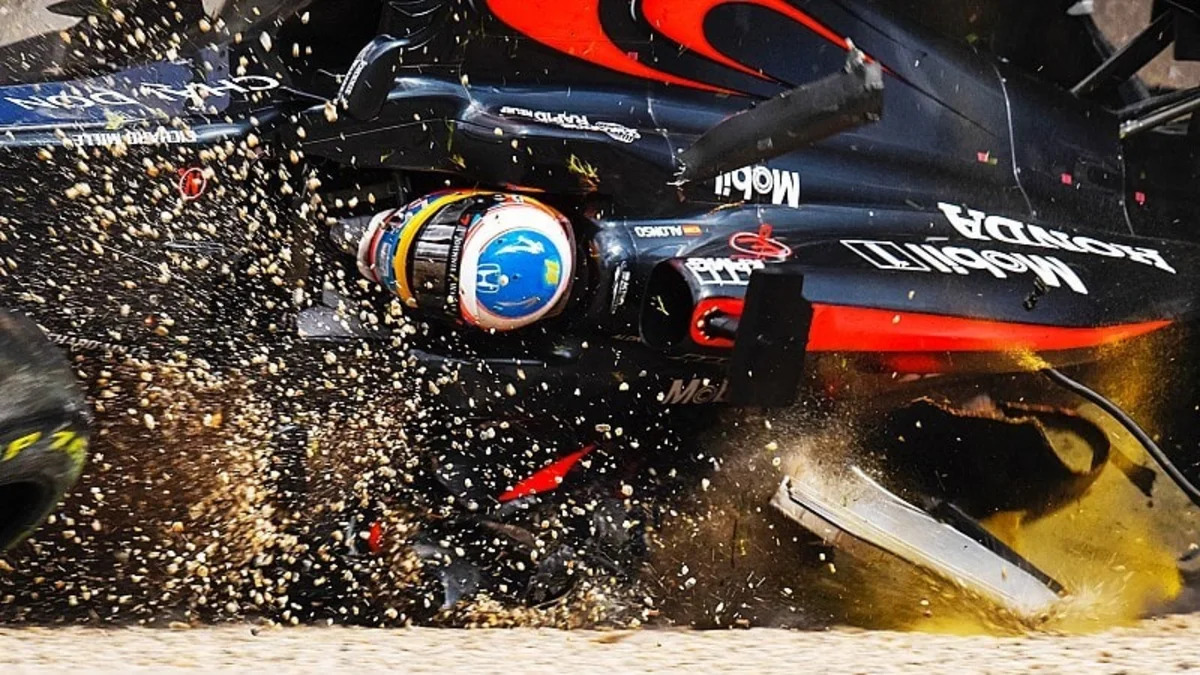Fernando Alonso's accident will be a good test case for fully understanding any downsides to the introduction of the Halo in Formula 1, say leading figures.
The McLaren driver emerged virtually unscathed from a spectacular accident at the Australian Grand Prix that destroyed his car.
He had been battling with Esteban Gutierrez for 19th position when he hit the rear wheel of his Haas rival, before spearing off into the wall and then barrel rolling to a halt upside down against the barriers.
Coming so soon after the first concept designs for the Halo emerged, his accident has inevitably focused thoughts on one of the downsides of closed cockpits, that it could be harder for drivers to get out of cars.
Speaking about possible complications, Alonso said: "It's something we need to look and investigate, because I had a little space to go out. It was easy for me to go out and we need to see with the Halo if that could become more difficult, so we need to investigate."
FIA cameras
The investigations over Alonso's accident will be helped by the fact that it is the first big crash that has been recorded by the FIA's new Ultra High Speed cameras.
Williams technical chief Pat Symonds said the extra insight would be fascinating, and will also help deliver more answers about the implications of a Halo system.
"I guess it's the first time we're going to see something from our high-speed cameras, which will be quite interesting," he said. "The high-speed cameras and the accelerometers, we'll be able to see exactly where his head was. And it will be possible to super impose that on an undamaged Halo position. As you know from the rally car stuff, if you get safety structures near the drivers head and the driver impacts, then you're much worse off than having nothing."
Related Video:
This article by Jonathan Noble originally appeared on Motorsport.com, the world's leader in auto racing news, photos, and video.
The McLaren driver emerged virtually unscathed from a spectacular accident at the Australian Grand Prix that destroyed his car.
He had been battling with Esteban Gutierrez for 19th position when he hit the rear wheel of his Haas rival, before spearing off into the wall and then barrel rolling to a halt upside down against the barriers.
Coming so soon after the first concept designs for the Halo emerged, his accident has inevitably focused thoughts on one of the downsides of closed cockpits, that it could be harder for drivers to get out of cars.
Speaking about possible complications, Alonso said: "It's something we need to look and investigate, because I had a little space to go out. It was easy for me to go out and we need to see with the Halo if that could become more difficult, so we need to investigate."
FIA cameras
The investigations over Alonso's accident will be helped by the fact that it is the first big crash that has been recorded by the FIA's new Ultra High Speed cameras.
Williams technical chief Pat Symonds said the extra insight would be fascinating, and will also help deliver more answers about the implications of a Halo system.
"I guess it's the first time we're going to see something from our high-speed cameras, which will be quite interesting," he said. "The high-speed cameras and the accelerometers, we'll be able to see exactly where his head was. And it will be possible to super impose that on an undamaged Halo position. As you know from the rally car stuff, if you get safety structures near the drivers head and the driver impacts, then you're much worse off than having nothing."
Related Video:
This article by Jonathan Noble originally appeared on Motorsport.com, the world's leader in auto racing news, photos, and video.


Sign in to post
Please sign in to leave a comment.
Continue